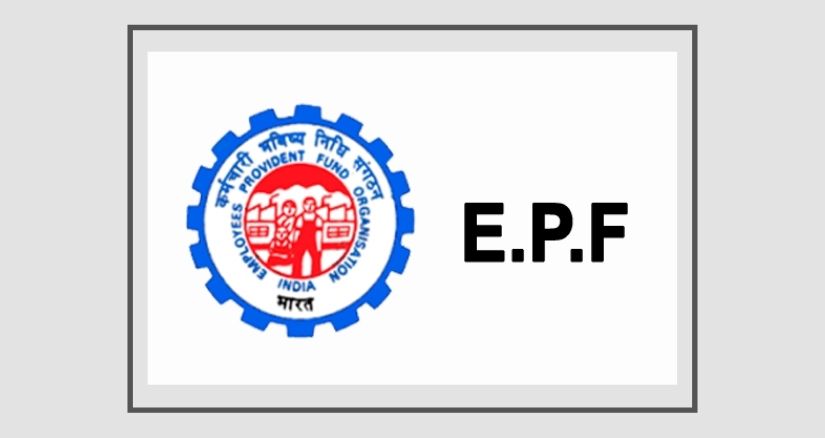With the 30th June 2025 deadline approaching for choosing the retirement options, don’t make a blind leap. Understand what truly sets Unified Pension Scheme (UPS) and National Pension System (NPS) apart—because your retirement deserves more than guesswork.
Introduction: The Retirement Crossroad for Central Government Employees
For over a decade, central government employees hired post-2004 have been part of the National Pension System (NPS)—a market-linked retirement pension scheme. But now, for the first time, there’s a game-changing twist: the government has opened the doors for employees to switch to the Unified Pension Scheme (UPS).
However, this isn’t a decision to take lightly. You have until June 30, 2025 to make this switch. One wrong decision today could echo across your retirement years—affecting your monthly pension, tax benefits, financial freedom, and peace of mind.
To help you make an informed choice, we’ve broken down the 7 powerful truths you need to know before locking into any retirement pension scheme.
1. Lump Sum Withdrawal: Same Limit, Different Tax Realities
Let’s start with a point most employees focus on—how much money you can take home at retirement.
Under both NPS and UPS, you are allowed to withdraw up to 60% of your total retirement corpus in one go, as a lump sum. This sounds straightforward, but the tax treatment is anything but equal.
Under NPS:
- 60% lump sum withdrawal is entirely tax-free.
- The remaining 40% must be used to purchase an annuity (which provides monthly pension), and annuity income is taxable.
Under UPS:
- While 60% withdrawal is allowed, the tax exemption on this withdrawal is not yet clarified.
- If taxed, this could result in a significant tax hit—imagine paying 20–30% on your retirement savings!
Why It Matters:
If you’re banking on that 60% to pay off loans, buy a house, or invest elsewhere, the NPS gives you a clear advantage with zero ambiguity.
2. Is the “Assured Pension” Under UPS Fully Guaranteed?
The biggest selling point of UPS is this: 50% of your last drawn basic pay as lifelong pension.
Sounds amazing, right?
But there are conditions.
Here’s when your “guaranteed pension” may reduce:
- If your service period is more than 10 years but less than 25, you won’t get the full 50%—you’ll receive a pro-rated pension.
- If your corpus is below a government-defined benchmark at the time of superannuation or voluntary retirement.
- If you opt for a lump sum withdrawal up to 60%, your assured pension will also be proportionately reduced.
Key Takeaway:
The “guarantee” is conditional. If you’re a short-tenured employee or planning early retirement, UPS might not offer the payout you expect.
3. Tax Benefits: NPS Provides Clearer and Higher Advantages
Tax efficiency is a critical pillar of any retirement pension scheme. Let’s compare how UPS and NPS perform here:
🟢 NPS:
- Employer contributions (up to 10% of salary) are tax-deductible under Section 80CCD(2).
- This deduction is available even if you opt for the new tax regime.
- You also get Section 80CCD(1B) benefits on additional self-contributions up to ₹50,000 per year.
UPS:
- No tax deduction available on employer contributions.
- Employee contributions are subject to normal deduction rules, but without exclusive provisions like NPS.
🧠 Interpretation:
Over a 30-year career, the tax savings under NPS can amount to lakhs, giving your corpus a powerful edge through compounding.
4. Early Withdrawals: Both Allow It, But NPS Has a Clear Tax Edge
What if you face an emergency and need to dip into your pension early?
Both schemes allow partial withdrawals, but the differences are again rooted in tax clarity and structure.
Common Rules (UPS & NPS):
- Allowed after 3 years from date of enrollment.
- You can withdraw up to 25% of your self-contribution (excluding investment gains).
- Permissible for specific reasons: child’s education, medical treatment, house purchase, marriage, etc.
- Allowed maximum 3 times before retirement.
The NPS Advantage:
- Such withdrawals are fully tax-exempt.
- For UPS, the tax treatment is unclear—posing a risk if you plan to rely on early withdrawals.
If you want financial agility, NPS provides more transparent and reliable flexibility.
5. UPS Offers Predictability, NPS Offers Flexibility
At the heart of your decision is a deeper question:
Do you value certainty more than control?
UPS – The “Safety First” Model:
- Ideal for those seeking a predictable, inflation-adjusted pension.
- A 50% pension based on basic salary provides reliable monthly income.
- No need to track markets or monitor fund performance.
But:
- Not ideal if you’re planning to retire early, change jobs frequently, or desire investment control.
- Restricted in terms of how you use or grow your pension.
NPS – The “Freedom with Responsibility” Model:
- You decide your asset allocation (equity, corporate debt, government bonds).
- You have the option to withdraw 60% tax-free and manage it independently.
- Offers flexibility to top-up your retirement corpus via mutual funds, annuities, or senior citizen schemes.
But:
- Requires active financial literacy.
- Market volatility can affect your final corpus and annuity.
If you want hands-off peace of mind, UPS is suitable.
If you want higher returns and freedom to optimize, NPS is your match.
6. Designing Your Post-Retirement Income with NPS
Let’s talk strategy.
The annuity purchased under NPS after retirement yields around 5–6% annually—a figure that barely beats inflation.
So is NPS a poor choice? Not necessarily.
Here’s a smart plan:
Step 1: Take 60% Tax-Free Lump Sum
Use this to create a customized income stream:
- Invest in Senior Citizen Savings Scheme (SCSS) at 8.2%
- Park funds in Post Office Monthly Income Scheme (POMIS) at 7.4%
- Opt for Mutual Fund SWPs or short-duration debt funds
- Consider low-risk annuities with return of purchase price
Step 2: Use 40% for Basic Annuity
Use this to cover non-negotiable monthly expenses like rent, medical costs, or utilities.
Step 3: Continue Retirement Contributions
Beyond NPS, build additional funds via PPF, FDs, gold ETFs, or REITs.
This hybrid approach gives you control, inflation protection, and higher returns—something UPS can’t offer with its fixed formula.
7. Summary Table – Quick Glance Comparison
| Feature | Unified Pension Scheme (UPS) | National Pension System (NPS) |
| Pension Structure | 50% of last basic (conditional) | Market-linked annuity payout |
| Lump Sum Withdrawal (60%) | Allowed, tax clarity pending | Allowed, tax-free |
| Employer Contribution Benefit | ❌ No tax deduction | ✅ 10% deductible (Sec 80CCD(2)) |
| Early Withdrawals | ✅ Allowed, ❓ Tax unclear | ✅ Allowed, ✅ Tax-free |
| Investment Flexibility | ❌ Fixed payout | ✅ Asset allocation control |
| Retirement Suitability | Best for long-term, single-job careers | Best for flexible, growth-oriented plans |
| Inflation Protection | ✅ Indexed pension | ❌ Partial via own management |
| Risk Profile | Low risk, high predictability | Moderate risk, high control |
Bonus Insight: How Assured Payout Reduces Under UPS
To further clarify, here’s when your UPS pension might be lower than expected:
- Shorter Service Tenure: 10–25 years = proportionately lower pension.
- Corpus Deficiency: If your savings fall short of the benchmark corpus at superannuation.
- High Withdrawal Preference: Opting for 60% withdrawal reduces the monthly assured pension accordingly.
UPS isn’t a one-size-fits-all guarantee.
Conclusion: Choose the Retirement Pension Scheme That Aligns with Your Life Plan
The choice between UPS and NPS is more than financial—it’s philosophical.
- Want guaranteed peace of mind, intend to work in the same system for 25+ years, and dislike financial complexity? 👉 Go for UPS.
- Want higher control, better tax benefits, flexibility to retire or switch careers early, and the possibility of building a bigger retirement fund? 👉 Choose NPS.
Whatever you choose, make it an informed decision—because retirement is not an event, it’s a 30-year journey.
Your Next Steps:
- Use NPS vs. UPS Calculator to project your retirement income.
- Consult a certified financial planner for personalized guidance.
FAQs on Unified Pension Scheme (UPS) vs National Pension System (NPS)
1. What is the maximum lump sum withdrawal allowed under UPS and NPS?
Under both UPS and NPS, employees can withdraw up to 60% of their total corpus as a lump sum at the time of superannuation.
2. Is the 60% lump sum withdrawal tax-exempt in both UPS and NPS?
For NPS, the 60% lump sum withdrawal is fully tax-exempt. However, it is not yet clear if UPS subscribers will receive the same tax exemption.
3. How does lump sum withdrawal affect the monthly pension payout?
Withdrawing the lump sum reduces the assured monthly pension payout proportionately under both UPS and NPS.
4. Are employer contributions tax-deductible under both schemes?
Employer contributions are deductible from taxable income under NPS (even for those opting for the new tax regime), but no such tax benefit is offered on UPS contributions.
5. Can I make early withdrawals from UPS or NPS?
Yes, both schemes allow partial early withdrawals of up to 25% of self-contributions (excluding returns) after completing a lock-in period of three years from the date of enrolment.
6. How many early withdrawals can I make before superannuation?
A maximum of three early partial withdrawals are allowed under both schemes for specified purposes until superannuation.
7. Are early withdrawals tax-exempt?
Early withdrawals under NPS are tax-exempt. For UPS, tax exemption on early withdrawals is still awaited clarity.
8. Who should consider choosing UPS over NPS?
UPS is ideal for those seeking predictable, guaranteed, and inflation-adjusted pension payouts, especially if they plan to stay in the same job until retirement.
9. Who should prefer NPS over UPS?
NPS suits individuals who value flexibility, control over investments, and those who might switch jobs or retire early.
10. What conditions can lead to a reduction in the assured UPS pension payout?
- If the qualifying service period is between 10 and 25 years, pension payout is proportionately reduced.
- If the individual corpus is less than the benchmark corpus at retirement.
- If the subscriber opts for a final withdrawal not exceeding 60% of the corpus, pension payout is proportionally reduced.
11. Can the lump sum payout from NPS be used to enhance retirement savings?
Yes, the 60% lump sum payout from NPS can be strategically invested to compensate for relatively low annuity payouts, potentially increasing retirement income.
12. Is the UPS pension inflation-adjusted?
Yes, UPS provides a guaranteed, rising pension that is adjusted for inflation, typically at 50% of the last drawn basic pay.




